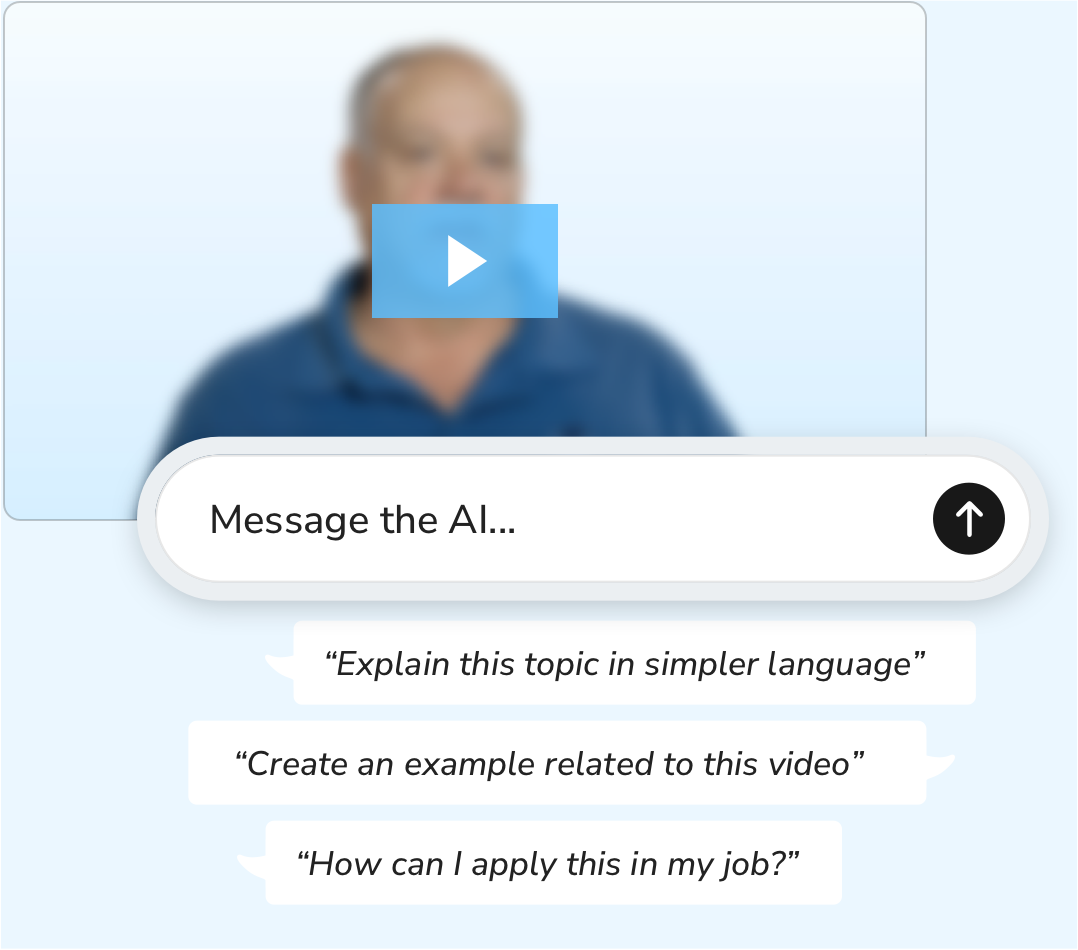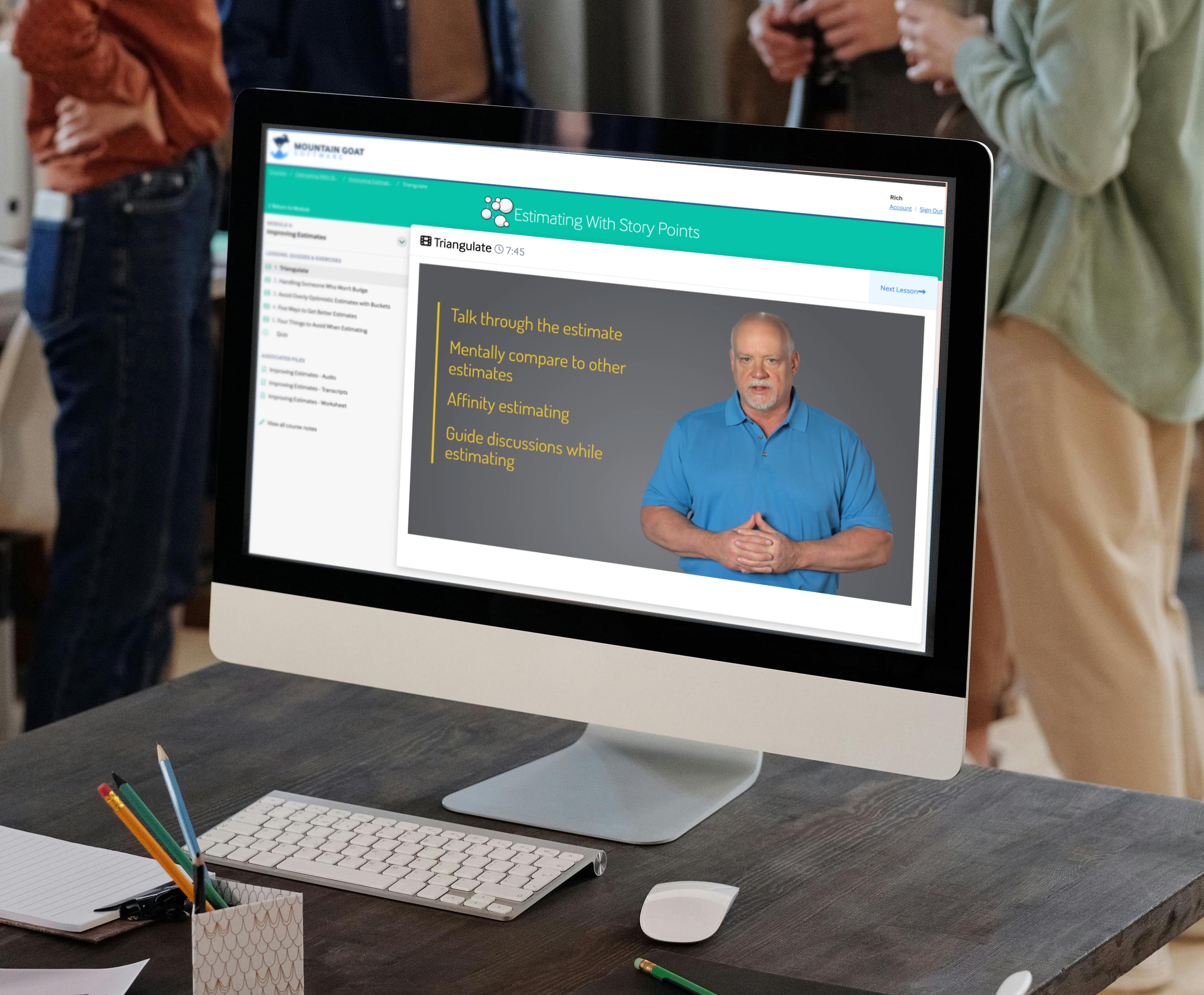Introducing the AI-Powered Agile Coach

Your personal Agile Coach, Built Into Every Lesson
This brand-new feature transforms traditional video training into active, personalized coaching.
As you watch, you can ask questions like:
-
“How would this work for my remote team?”
-
“Can you give me an example of this for a product backlog?”
-
“How do I explain this concept to a stakeholder?”
You’ll get clear, practical answers based on the content you’re watching—instantly.
Whether you’re running your next retrospective, planning a sprint, or improving your backlog, the AI coach gives you real-time guidance that helps you apply what you learn right away.



